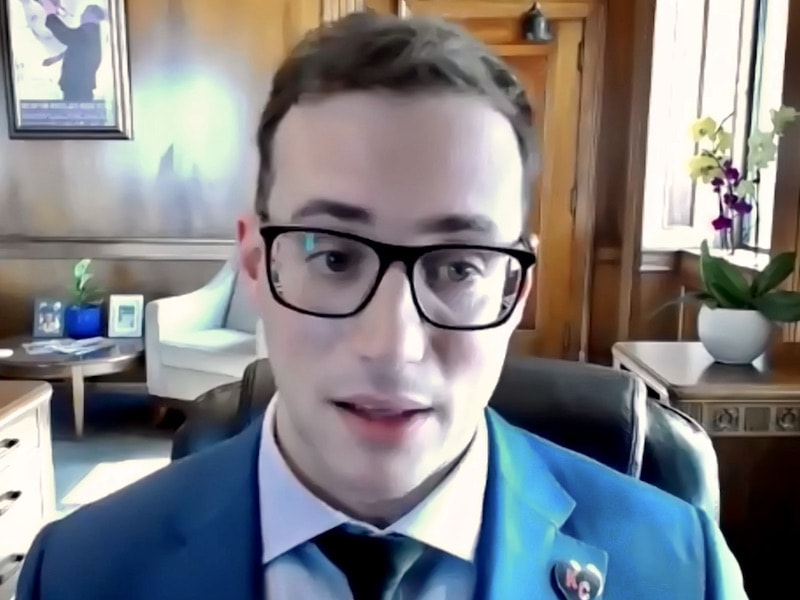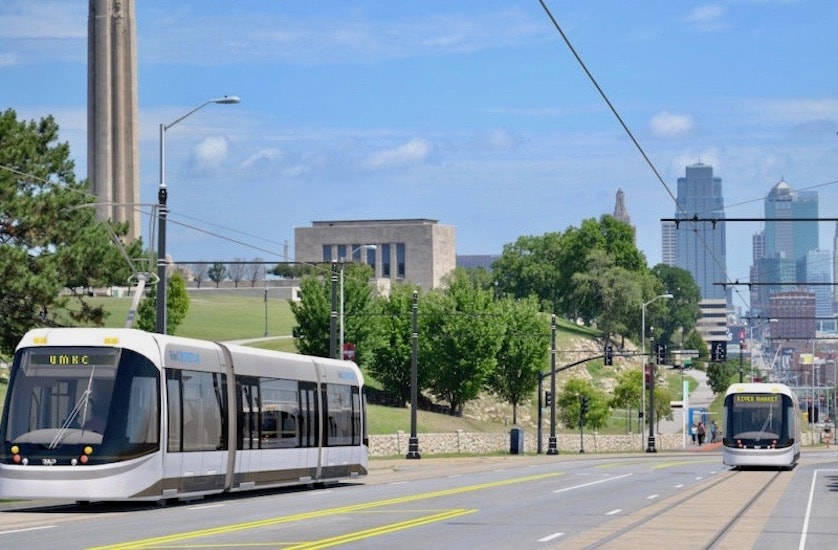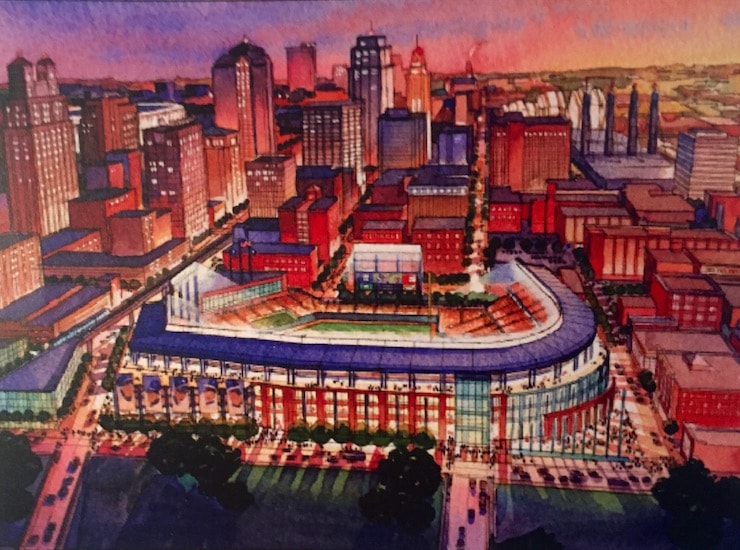New City Manager Talks About Police, Streetcar Development and Ballpark

Published February 22nd, 2021 at 1:15 PM
Brian Platt, the new city manager, took questions from Midtown KC Now members last week via Zoom. The organization, formerly MainCor, runs a community improvement district along Main and Broadway, and promotes the overall interests of the area.
Some context, Platt, 35, came here in early December after serving as city manager of Jersey City, NJ for just under three years.
While Jersey City is smaller, 262,075 residents vs 495,325 in KC, it’s one of the most densely populated cities in the U.S. with 18,000 people per square mile vs. 1,580 here.
It’s also in the middle of the New York metropolitan area, the nation’s largest, across the Hudson River from Lower Manhattan,
Jersey City is one of the country’s most diverse cities with 29 percent of its residents Hispanic; 24 percent Black, 25.4 percent Asian and 21 percent white. KC’s breakdown is 55 percent white, 30 percent Black, 10 percent Hispanic and 2.5 percent Asian.
About 14.5 percent of Jersey City residents live below the poverty line, according to the Census, vs 15.3 percent in Kansas City.
It has a dramatically lower murder rate per capita, 6.29 per 100,000 people in 2018 vs 27.8 that same year in KC.
The questions and answers have been edited for brevity.

Kansas City Police Chief Rick Smith
Local control of the police department is not a decision for you to make but I’m curious if you’ve had this experience before?
I don’t think the structure of the organization matters so much if things are working well. If we have low crime and if everyone’s satisfied with their safety…then why mess with a broken thing? It’s hard to say things are working well if murder rates are at record highs.
I’ve said this to our police leadership and to our elected officials that no matter who’s in charge, we’re all responsible. People are coming to us and complaining about it and it’s our responsibility collectively as a city to make this place a better and safer place to live.
Just because there’s a separate board of commissioners that technically the police chef answers to doesn’t mean that the chief and I can’t have productive conversations and talk about ways we can improve policing.
I’m learning a lot, I’m learning a ton about how we do policing here and some of the things that have worked and not worked.
I will say though, that coming from my experience in Jersey City where we, when I left, we were at a record low murder rate, we had built very strong, positive relationships with the community, and with community policing we’ve done a lot of things.
We went from people being terrified to leave their homes to thanking us and hugging police officers and having a first name basis with police officers in certain neighborhoods because of the things we were doing there.
There are certainly ways to solve the crime issue and the murder rate but I wouldn’t say that if the city got local control it would solve it necessarily because you still have to implement new policing techniques.

A screenshot from a video posted to Twitter of a stunt-driving incident lst fall at 13th and Grand.
Every warm weekend, there are evening parades up and down Main street of reckless driving, drag racing. Why is there no apparent police presence permitting this ongoing recklessness?
I’ve had some preliminary discussions with the police on this, but I think in general the way to solve this sort of thing is to redesign our streets to make them less drag strips and race tracks and more of neighborhood level streets that have slower speed limits, that are little narrower, that have different types of uses on them.
I’ve noticed there’s a lot of extra lanes everywhere on the streets, Its rare that I’m driving down a street and there are two lanes of traffic I’m driving with and than two lanes on the other side. It’s just so easy to go fast on streets like that.
Doing what we can to narrow those lanes, add bike facilities, add whatever it’s going to be, it could be outdoor seating for restaurants, it could be green space and so many things we could do with the streets that would make it harder to literally have a drag race street or do donuts and cover the street in burnt rubber. I think that’s the long-term fix.
There’s always that enforcement component, but the problem with relying on enforcement is when that enforcement is not there, the unwanted activity can theoretically just return.

Rendering of a UMKC-bound streetcar leaving downtown on Main Street. (Image from HDR)
What do you see as the city’s role in maximizing development opportunities associated with the extension of the streetcar?
We’re the discussion facilitator of assuring we get the right, responsible developments along that line. We’re building our density and activity around that transit, and a transit line like that is going to incentivize and attract different kinds of development.
We really only get one shot to build out the corridor there. We have to make sure whatever we want, we’re having these discussions now to make sure we put the right procedures and controls to get there.
I would hate to turn around in 10 or 15 years and look at some things and say man, I wish we would have done that differently, but that’s where these discussions come in.
What’s your take on a potential downtown ballpark and if one is proposed, what would the city’s role be in helping develop it?
I know there have been discussions about a ballpark very close to City Hall on those vacant (East Village) properties. I actually think that location is better suited for high-rise development, residential, commercial, retail space with a lot of community benefits that activate the streets there 24 hours a day every day of the week.

A rendering of how a potential downtown ballpark would have looked at the North Loop site was part of a 2005 study by Barrett Sports Group.
We need to build up the population living in the core of the city that will help support the entire downtown area and the entire region. A ballpark is a really cool amenity, but it’s only an amenity that’s in use 80 days a year.
There are of course a lot of benefits to them and I think there are some better areas in the city, better locations, that would be better suited for something that would bring people to those neighborhoods.
The core of downtown is not somewhere we should have to attract people to come to, it should be where everyone is living and everyone is going, so why not continue to build up that area and bring more people there and more activity there for people to do and put the ballpark in a different location?
I feel like the facilities we have are pretty nice. I went to Arrowhead Stadium a couple of times, it’s actually really nice. I’m used to MetLife (NFL) Stadium in New Jersey. It was built three years ago and Arrowhead is as nice if not nicer than that new stadium.
I’m happy to have discussions with community leaders and everyone here and anyone else who has different opinions about that.


